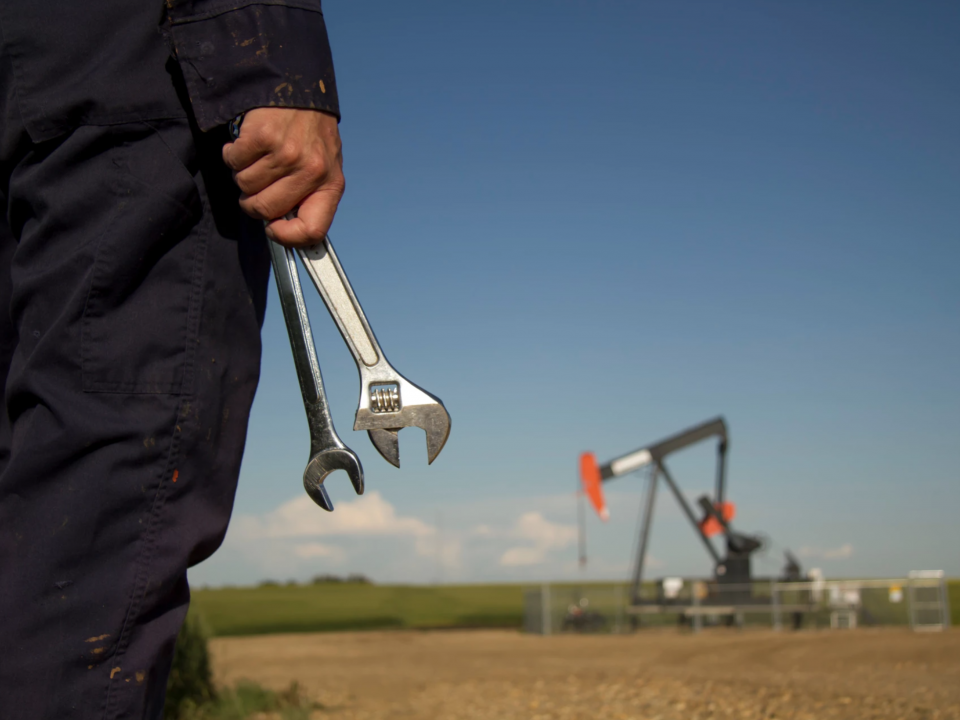4 WAYS AUTOMATION TAKES OIL AND GAS PRODUCTION FROM STONEAGE TO SPACEAGE
- DATA QUALITY
- MOBILITY
- IT/DATA MANAGEMENT
- FDG
- PRODUCTION
- PRODUCTION REPORTING
- Digital Oilfield
- TECHNOLOGY
- DIGITAL OILFIELDFIELD DATA CAPTUREFIELD OPERATIONSLEASE OPERATORSOIL AND GAS SOFTWAREOIL AND GAS DIGITAL OILFIELDPRODUCTION
- LOE
- PRODUCTION SOFTWARE
- OILFIELDDIGITAL OILFIELD TECHNOLOGYDYNAMIC ROUTINGOIL AND GAS SOFTWAREPUMP BY EXCEPTION
- FIELD DATA CAPTURE OIL AND GAS
4 WAYS AUTOMATION TAKES OIL AND GAS PRODUCTION FROM STONEAGE TO SPACEAGE
When oil and gas exploration has raced ahead into spaceage with drillbit, why has production stayed anchored to the stoneage? I’ll tell you why – they are held hostage by archaic, siloed systems of records, and tone-deaf field engagement legacy software. The software doesn’t show a true way to scale production without adding pumper headcount. That’s the antithesis of innovation. More and more oil and gas producers cannot live with this reality of unprofitable field costs. The only way out is transformation of industry practices spurred by disruptive technology specifically designed to enhance the efficiency of field day-to-day operations. Automation takes oil and gas production to the next level.
FDG AUTOMATION: USING FIELD INTELLIGENCE TO BOOST PRODUCTIVITY
A major disruptive technology revolutionizing productivity in the oil and gas patch is known as dynamic routing, which combines field intelligence, AI and big data. Automation and self-learning algorithms provide oil and gas field operations with insight and the ability to take immediate action. Today’s tools must contain location awareness, one-click data access, and business-based alerting. They should be reducing the number of decisions made so that lease operators can focus on the exceptions to save costs and produce more oil.
A case study demonstrating how a Bakken shale producer was able to use Seven Lakes’ JOYN FDG platform to increase production while at the same time reducing opex can be found in this white paper. Seven Lakes’ JOYN field data gathering (FDG) application has led the way in bringing automated intelligence to all aspects of production by incorporating automation requirements in functions such as well service, work order completion, safety, and compliance. Allowing industry operators to drastically cut the amount of employee hours needed to perform these processes, significantly reducing loe.
4 BUSINESS IMPERATIVES FOR AUTOMATION
Instituting automation takes oil and gas production to the next level by enhancing a variety of functions, including:
- Well Service: The JOYN platform’s algorithms dynamically route well servicing personnel to visit wells which need service on a priority basis, using field intelligence to significantly improve pumper productivity.
- Completing Work Orders: Requiring automation in completing work orders enables your operations staff to resolve jobs in a timely manner without having to rely on a centralized reporting process. Results can be monitored and reported on from the field via mobile work orders.
- Safety: JOYN can automatically provide alerts regarding potential safety issues by performing SCADA data analysis, providing the field intelligence your pumpers need to provide remediation before a safety issue occurs.
- Compliance: Data is gathered in a centralized location in the platform, allowing you to create compliance reports for various regulatory bodies without needing to add extra personnel.
AUTOMATION-DRIVEN INNOVATION: A BRIGHT FUTURE
The disruptive change ushered in by advances in technology has been substantial, but the revolution in production practices it has engendered has plenty of room to run. More producers are seeing the operational improvements that can be made by adding automation requirements to their production routines. The trend of is gaining more and more momentum, leading to further adoption of the technology and new innovations in the field. It’s clear now that automation takes oil and gas production to the competitive level of excellence and sustainability. As a leader in field intelligence software, Seven Lakes is continuously updating and improving its solutions to enable its customers to benefit from new developments in the field.





